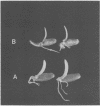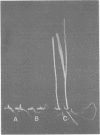Abstract
Exposure of seedlings of winter rye (Secale cereale L., cv. Puma) for 2 weeks or 24 hours to desiccation stress (40% relative humidity) at room temperature (21°C) in the dark induced degrees of freezing and drought tolerance in the plumules comparable to those produced by cold conditioning for 2 weeks at 3°C. The induction was associated with repression of growth and could not be produced in plumules excised from the seedlings indicating a requirement for translocation of nutrients from the endosperm. Rapid increase in osmotic pressure, soluble proteins, and phospholipids in plumules in association with the development of freezing and drought tolerance and the requirement of endosperm suggested diversion of nutrient from use in extension growth, to use in augmentation of protoplasm in plumule cells. Since cold acclimation slowed or arrested growth and is associated with augmentation of protoplasm, it is suggested that the common element in the induction of freezing tolerance by cold and drought is the necessity for producing a condition of augmented protoplasm and membranes in cells thus reinforcing a similar conclusion reached from seasonal studies on woody plants.
Full text
PDF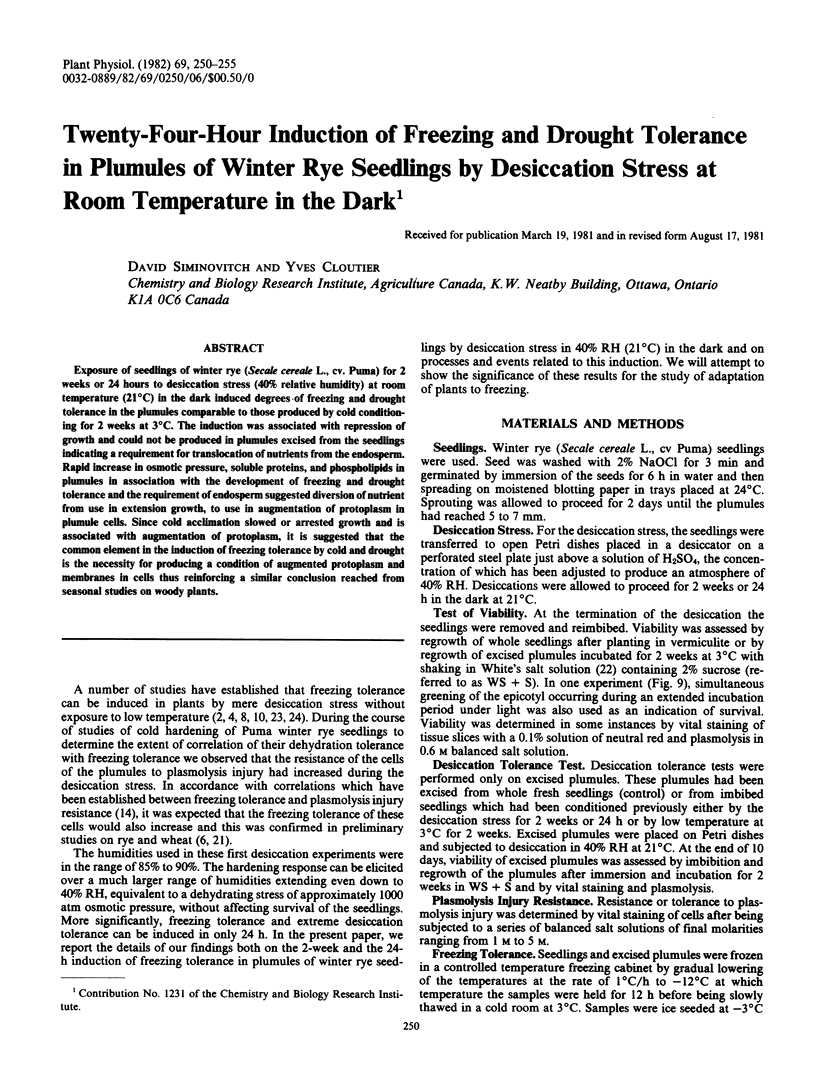
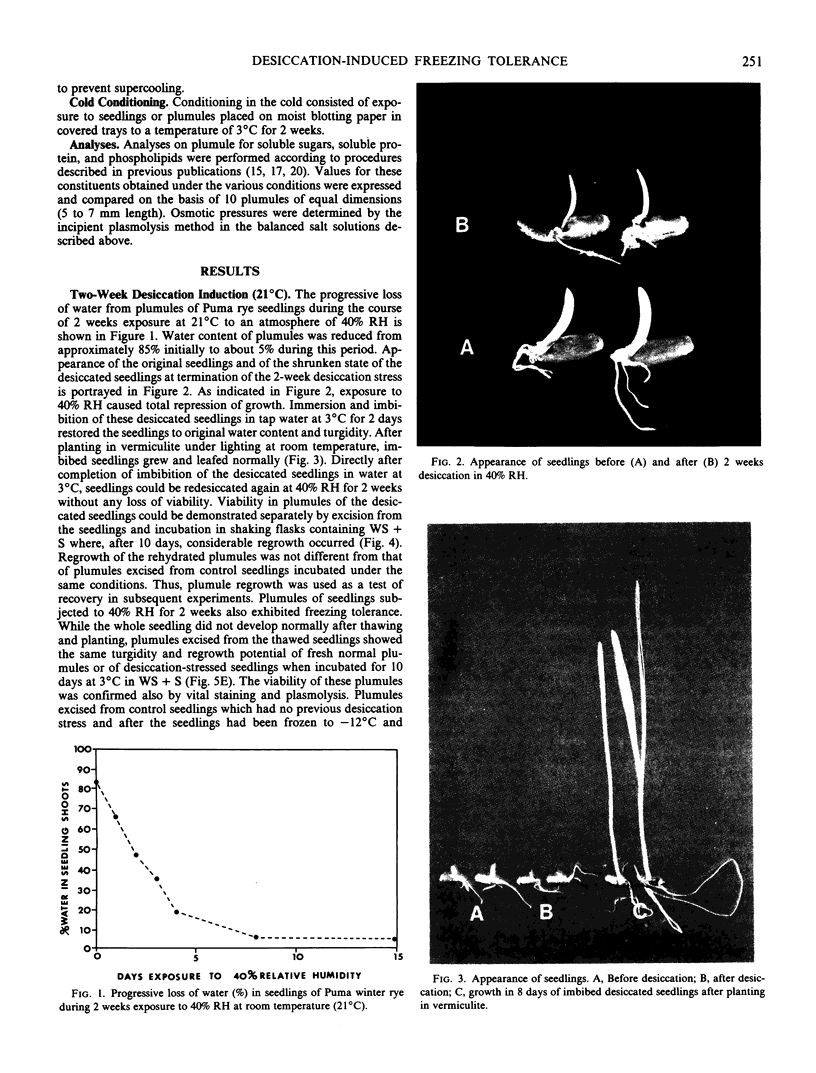
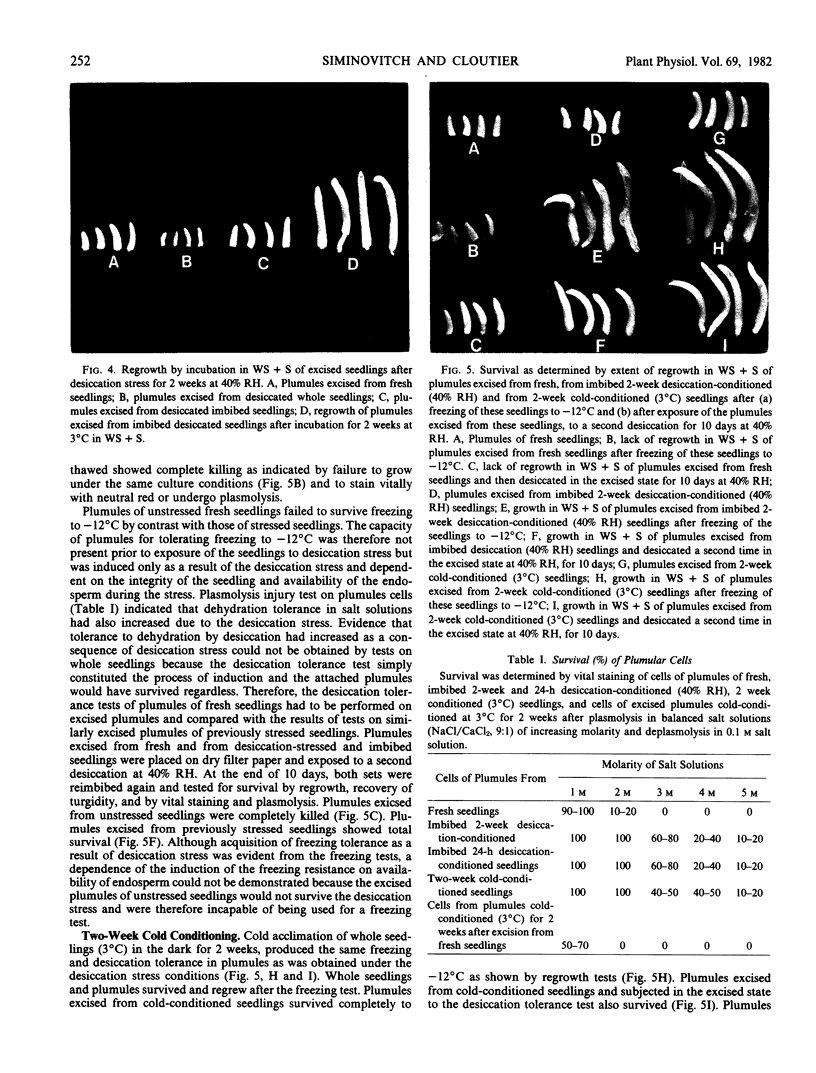
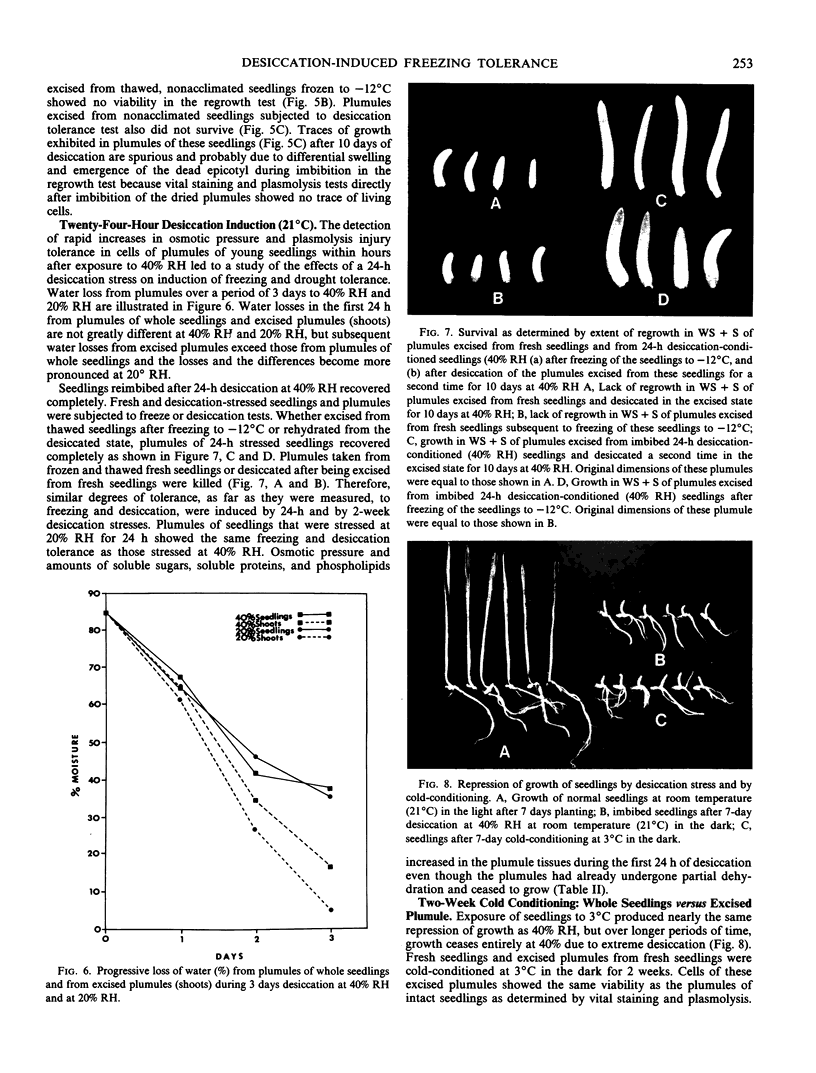
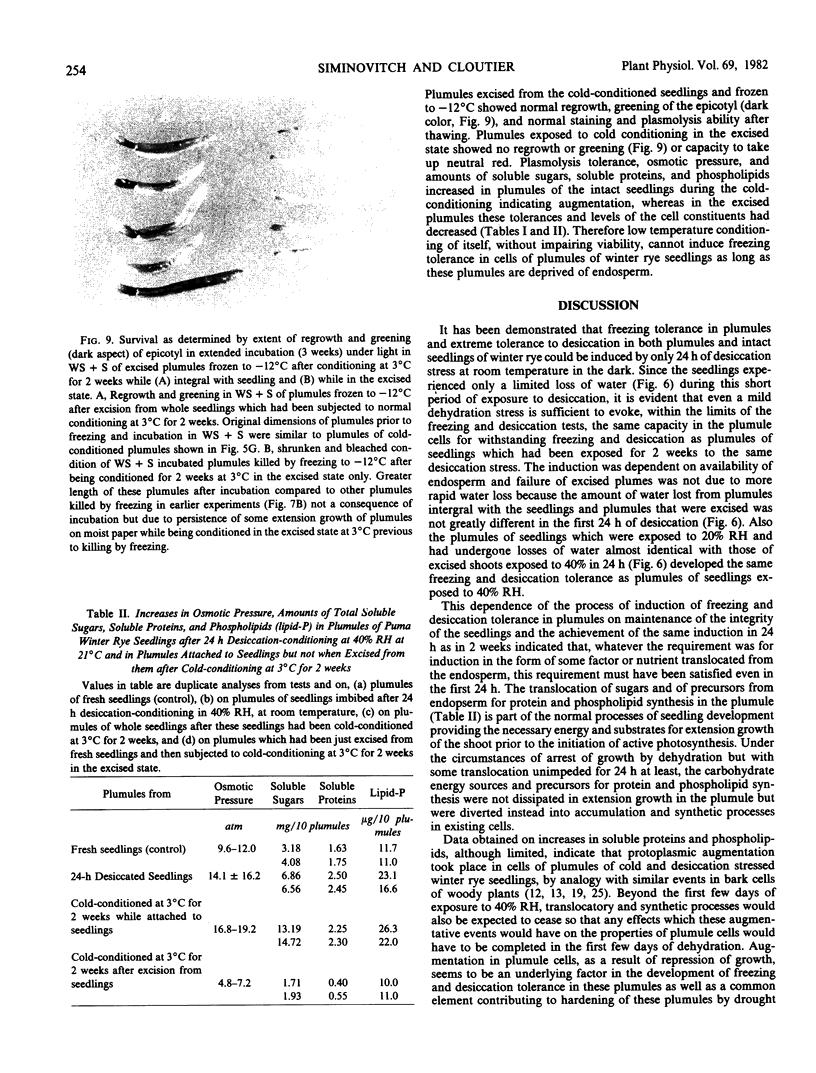
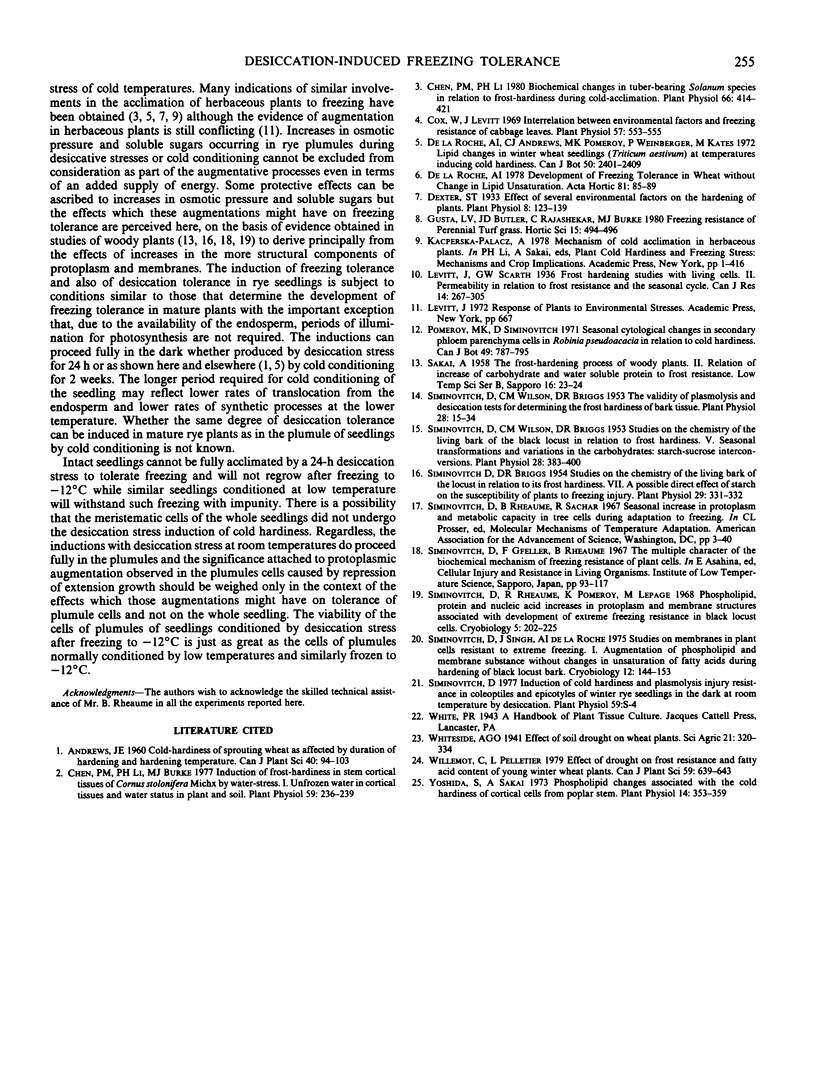
Images in this article
Selected References
These references are in PubMed. This may not be the complete list of references from this article.
- Chen H. H., Li P. H. Biochemical Changes in Tuber-bearing Solanum Species in Relation to Frost Hardiness during Cold Acclimation. Plant Physiol. 1980 Sep;66(3):414–421. doi: 10.1104/pp.66.3.414. [DOI] [PMC free article] [PubMed] [Google Scholar]
- Chen P. M., Li P. H., Burke M. J. Induction of Frost Hardiness in Stem Cortical Tissues of Cornus stolonifera Michx. by Water Stress: I. Unfrozen Water in Cortical Tissues and Water Status in Plants and Soil. Plant Physiol. 1977 Feb;59(2):236–239. doi: 10.1104/pp.59.2.236. [DOI] [PMC free article] [PubMed] [Google Scholar]
- Cox W. Interrelations between Environmental Factors and Freezing Resistance of Cabbage Leaves. Plant Physiol. 1976 Apr;57(4):553–555. doi: 10.1104/pp.57.4.553. [DOI] [PMC free article] [PubMed] [Google Scholar]
- Dexter S. T. EFFECT OF SEVERAL ENVIRONMENTAL FACTORS ON THE HARDENING OF PLANTS. Plant Physiol. 1933 Jan;8(1):123–139. doi: 10.1104/pp.8.1.123. [DOI] [PMC free article] [PubMed] [Google Scholar]
- Siminovitch D., Briggs D. R. Studies on the Chemistry of the Living Bark of the Black Locust in Relation to Its Frost Hardiness. III. The Validity of Plasmolysis and Desiccation Tests for Determining the Frost Hardiness of Bark Tissue. Plant Physiol. 1953 Jan;28(1):15–34. doi: 10.1104/pp.28.1.15. [DOI] [PMC free article] [PubMed] [Google Scholar]
- Siminovitch D., Briggs D. R. Studies on the Chemistry of the Living Bark of the Black Locust in Relation to Its Frost Hardiness. VII. A Possible Direct Effect of Starch on the Susceptibility of Plants to Freezing Injury. Plant Physiol. 1954 Jul;29(4):331–337. doi: 10.1104/pp.29.4.331. [DOI] [PMC free article] [PubMed] [Google Scholar]
- Siminovitch D., Rheaume B., Pomeroy K., Lepage M. Phospholipid, protein, and nucleic acid increases in protoplasm and membrane structures associated with development of extreme freezing resistance in black locust tree cells. Cryobiology. 1968 Nov-Dec;5(3):202–225. doi: 10.1016/s0011-2240(68)80164-6. [DOI] [PubMed] [Google Scholar]
- Siminovitch D., Singh J., de la Roche I. A. Studies on membranes in plant cells resistant to extreme freezing. I. Augmentation of phospholipids and membrane substance without changes in unsaturation of fatty acids during hardening of black locust bark. Cryobiology. 1975 Apr;12(2):144–153. doi: 10.1016/s0011-2240(75)80006-x. [DOI] [PubMed] [Google Scholar]
- Siminovitch D., Wilson C. M., Briggs D. R. Studies on the Chemistry of the Living Bark of the Black Locust in Relation to Its Frost Hardiness. V. Seasonal Transformations and Variations in the Carbohydrates: Starch-Sucrose Interconversions. Plant Physiol. 1953 Jul;28(3):383–400. doi: 10.1104/pp.28.3.383. [DOI] [PMC free article] [PubMed] [Google Scholar]



